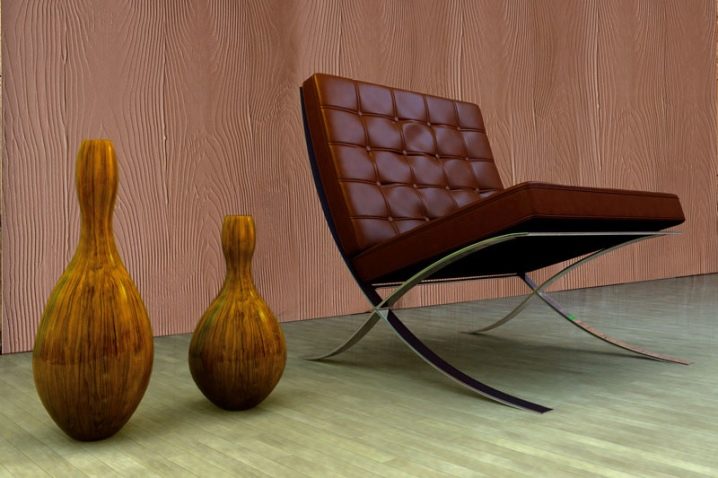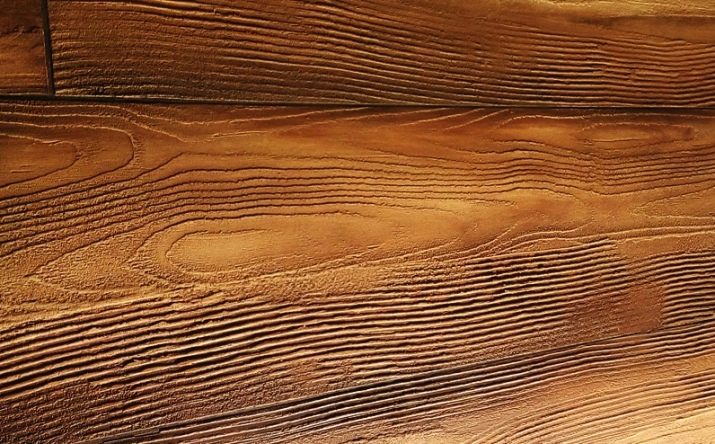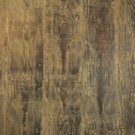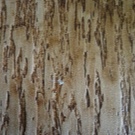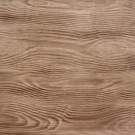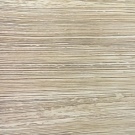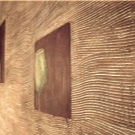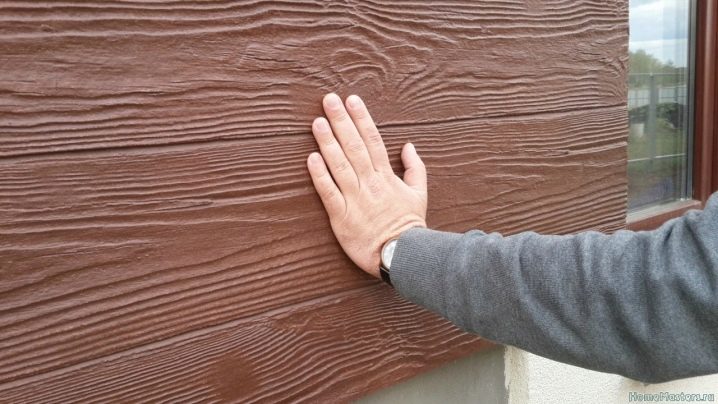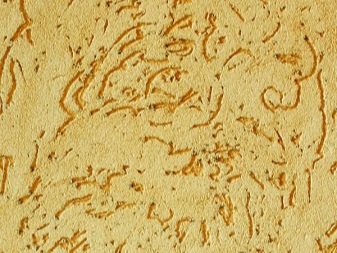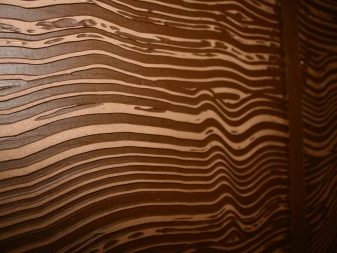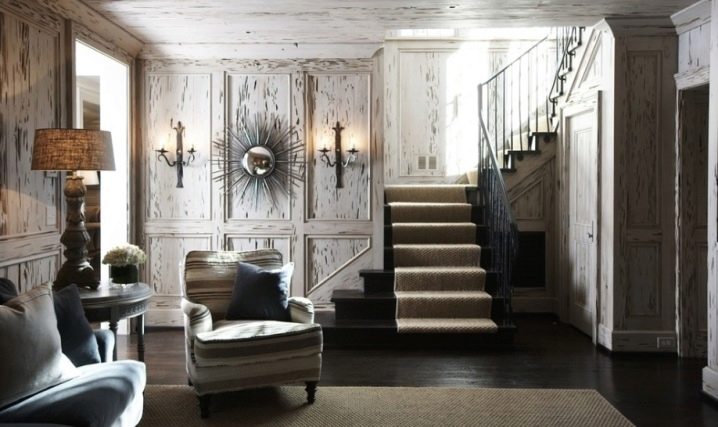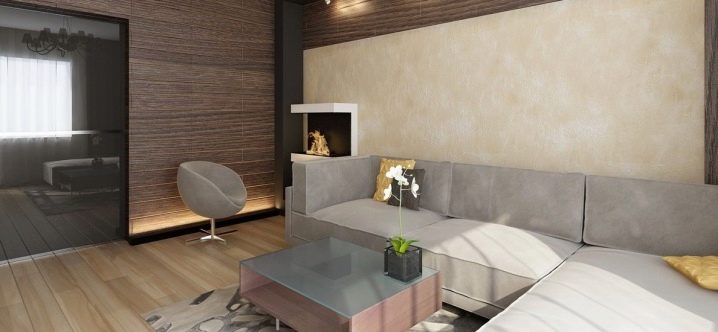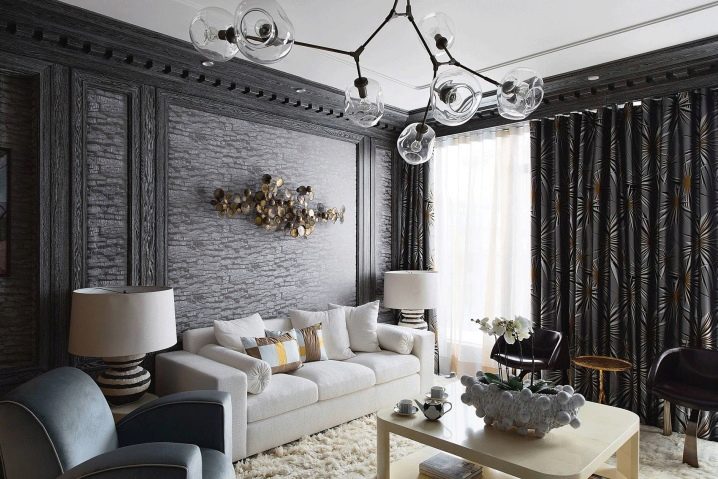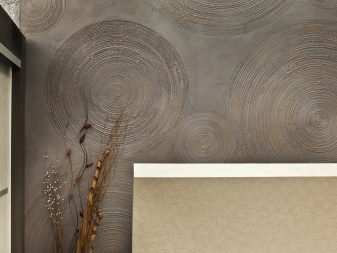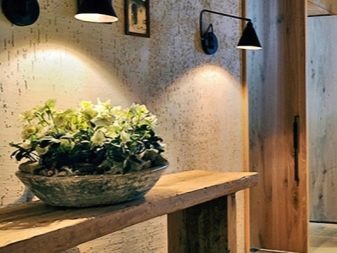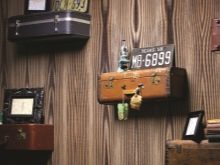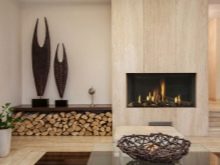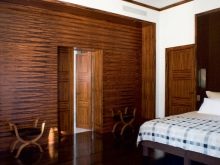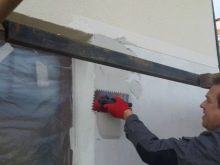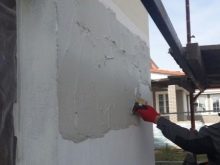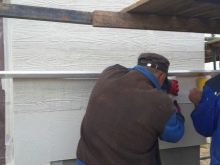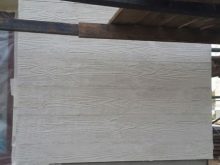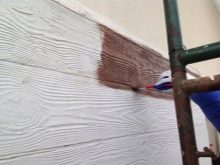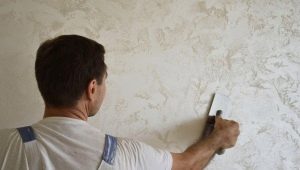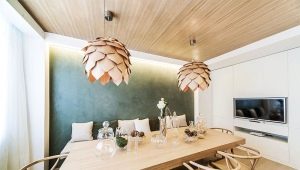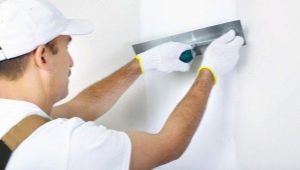Decorative wood-plaster in a modern interior
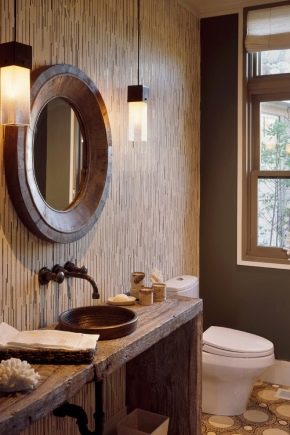
Decorative plaster today is one of the most popular finishing materials, because at a relatively low cost and ease of use it successfully imitates more expensive types of finishes. The variety "under the tree" is widely used in various styles and can be used in rooms for various purposes.
Features and varieties
Natural wood is still considered one of the most desirable materials in the interior, but its cost is such that both consumers and producers often think about what it can be replaced with. Perhaps, by the useful properties of natural raw materials there are no analogues, but you can find a good solution,which at least visually created a feeling of presentability. Decorative wood plaster can look like the following design elements:
- tree bark;
- plank upholstery;
- cross cut of a trunk;
- corroded tree surface;
- panels of wood.
In this case, the plaster remains just a plaster, and it is definitely not worth waiting for the durability of natural wood from it. A well-protected plastered surface, exposed on the outside with a special varnish, can last for a dozen years inside the house, but the half-century figures characteristic of the original material look unattainable to it for her. However, the last drawback easily turns into an advantage, allowing you to periodically update the interior, changing the style of decoration.
At the same time, experts distinguish two separate types of decorative wood-based plaster.
- So called structural coating attracts consumers with its ease of application. As a rule, for such repairs do not even need to call professionals. The main drawback is usually called too shallow relief, because of which the surface seems too smooth and relatively unnatural.
- Textured plaster provides much greater depth of relief.It is thanks to the use of such mixtures that a recognizable bark beetle effect is achieved. However, high aesthetic indicators adversely affect the cost of production: you have to fork out to afford such repairs.
Use in various styles
Although wood is considered an indispensable attribute classic interiorIt is not recommended to replace it with decorative plaster, because with a general similarity the difference is still noticeable. Classic implies solidity and solidity, and the plastered surface in any case looks much easier.
A completely different effect is produced by decorative wood plaster when used in interiors. country style. Such a rustic style implies the use of wood, however, it is not historically luxurious, so an artificial “wooden” finish here can play the role of a decor or even a point accent. Since power is not required here, you can combine this decoration with painting or even whitewashing walls and ceilings, not to mention properly selected wallpaper.
Of course, the woody theme should be revealed to a greater degree, but the desired effect is no longer achieved at the expense of the walls, but with the help of furniture - the same stools.The abundance of textile elements and patterned accents will only add to the room of rustic charm.
Artificial wood in small quantities appropriately looks and style minimalism. It is very important not to overdo it, because too massive details or too bright and noticeable texture will seem to deviate from the general line. Probably, the textured variety of the mixture, which gives a particularly deep pattern, will seem superfluous here.
If we talk about the rooms where decorative woodwork can be used, the living room will be the predicted leader. The room in which the owners gather with the whole family or receive guests, a priori should be quite presentable, because this is where imitation of natural wood will be in place. As decorative inserts such elements of decoration can be used in the bedroom or corridor.
In the kitchen to use decorative plaster should be careful - the ingress of water can adversely affect the appearance of the finish. For bathrooms, in which elevated temperature and humidity is a constant norm, decorative plaster is usually not recommended.
Application technology
Difficult relief may somewhat puzzle a beginner, who first gathered to work with such plaster, but knowledgeable people often point out the unexpected simplicity of applying a mass to the walls. It is enough to watch several training videos on the Internet, buy special graters or rods in the store to give the necessary texture and expenses for hired workers can be deleted from the estimate of the repair.
As for the technology of the job, it is quite simple:
- Since the plaster is covered with a rather thick layer, special preparation of the walls is not required - the finish will hide minor imperfections. It should pay attention to large cracks and chips, because finishing plaster is too expensive to fill such defects with it.
- After that, the walls must be carefully primed and allow the primer to dry.
- A thick mass of plaster with a spatula applied to the wall, ensuring that the layer was smooth, without noticeable relief. The specific thickness of the plaster layer depends on the degree of readiness of the wall, the amount of primer and the quality of the mass itself, but usually half a centimeter is enough.
- Then comes the time to give the plastered surface a characteristic texture. For this, a special grater is usually used, which is carefully carried out far and wide, trying to create a “woody” pattern. Craftsmen in some cases replace such a grater even with an ordinary large brush, but for the first experience it is better not to experiment with it.
- Grater or brush leave on the surface of the plaster too rough relief, so after the mass dries, the surface is usually cleaned with the help of the same spatula. The task of the wizard at this stage is not a complete leveling of the surface, but only smoothing too coarse grooves.
- Using a brush, tampon or roller on top of the dried plaster put a special gel-color, which further increases the similarity of the surface with wood. Although the mass already seems dried up and fairly solid, it is recommended to carry out a tool dipped in a gel exclusively along the grooves.
- Finally, the lining is smoothed again in order to achieve an effect, albeit a rough, but treated surface.
How to make a wood imitation plaster, you will learn from the following video.
